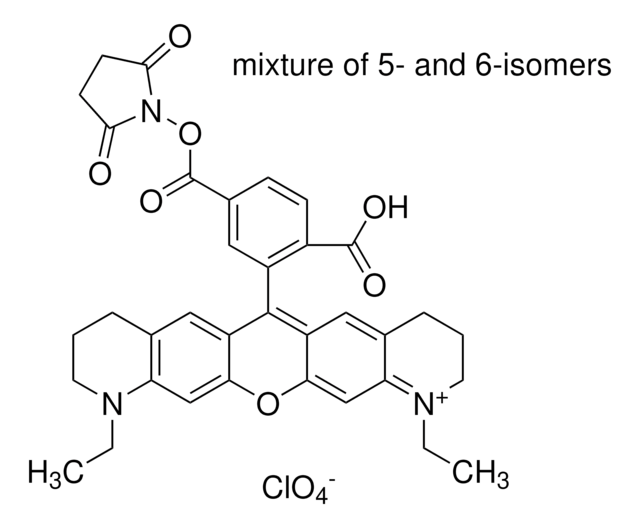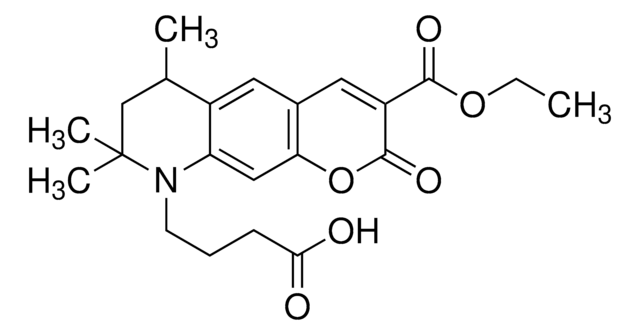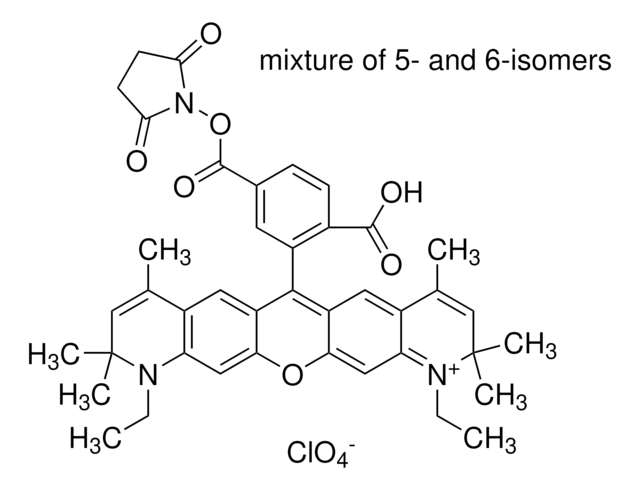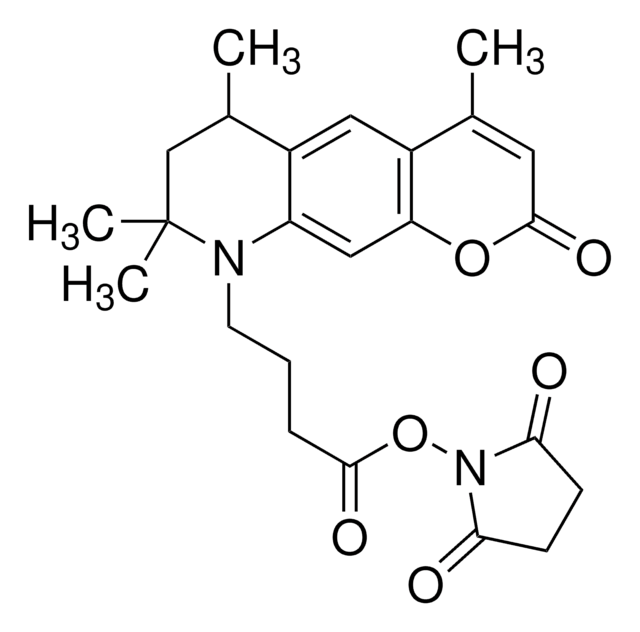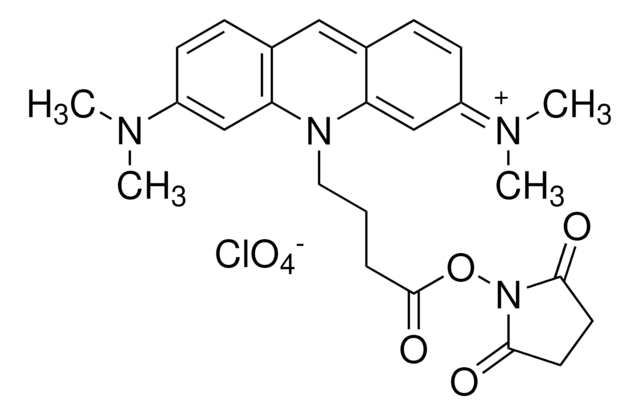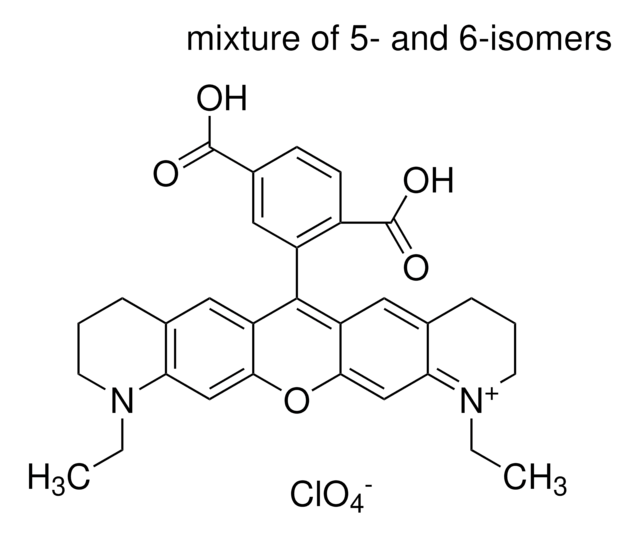16805
Atto 425 NHS ester
BioReagent, suitable for fluorescence, ≥90% (HPLC)
Sinónimos:
Atto 425-N-hydroxysuccinimide ester
About This Item
Productos recomendados
Línea del producto
BioReagent
Nivel de calidad
Análisis
≥90% (HPLC)
≥90% (degree of coupling)
fabricante / nombre comercial
ATTO-TEC GmbH
solubilidad
DMF: soluble
DMSO: soluble
H2O: soluble
λ
in ethanol (with 0.1% trifluoroacetic acid)
Absorción UV
λ: 422-428 nm Amax
idoneidad
suitable for fluorescence
temp. de almacenamiento
−20°C
cadena SMILES
CCOC(=O)C1=Cc2cc3C(C)CC(C)(C)N(CCCC(=O)ON4C(=O)CCC4=O)c3cc2OC1=O
InChI
1S/C26H30N2O8/c1-5-34-24(32)18-12-16-11-17-15(2)14-26(3,4)27(19(17)13-20(16)35-25(18)33)10-6-7-23(31)36-28-21(29)8-9-22(28)30/h11-13,15H,5-10,14H2,1-4H3
Clave InChI
PUEQEMDTFPYCDY-UHFFFAOYSA-N
Categorías relacionadas
Descripción general
Aplicación
Otras notas
Información legal
Código de clase de almacenamiento
11 - Combustible Solids
Clase de riesgo para el agua (WGK)
WGK 3
Punto de inflamabilidad (°F)
Not applicable
Punto de inflamabilidad (°C)
Not applicable
Equipo de protección personal
Eyeshields, Gloves, type N95 (US)
Certificados de análisis (COA)
Busque Certificados de análisis (COA) introduciendo el número de lote del producto. Los números de lote se encuentran en la etiqueta del producto después de las palabras «Lot» o «Batch»
¿Ya tiene este producto?
Encuentre la documentación para los productos que ha comprado recientemente en la Biblioteca de documentos.
Los clientes también vieron
Nuestro equipo de científicos tiene experiencia en todas las áreas de investigación: Ciencias de la vida, Ciencia de los materiales, Síntesis química, Cromatografía, Analítica y muchas otras.
Póngase en contacto con el Servicio técnico